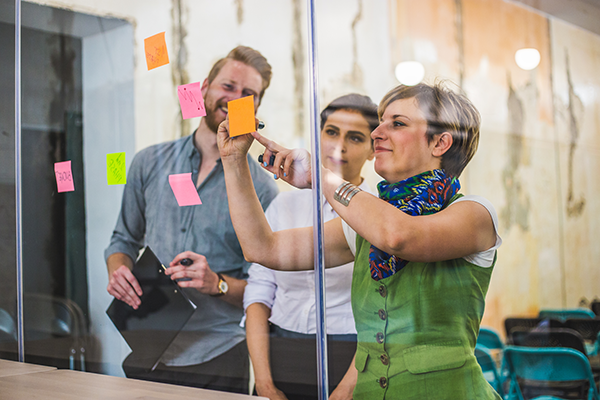Design Thinking for Business Impact

This one-day course provides a hands-on, immersive introduction to design thinking - an approach used by the world’s leading innovators to solve complex business challenges.
It's designed for professionals at any level who want to understand how to apply human-centered design to create better products, services, and strategies.
Through interactive exercises, real-world examples, and practical tools, you’ll learn how to:
✅ Reframe challenges from a customer perspective.
✅ Generate and test ideas quickly.
✅ Build alignment and creativity within your team.
✅ Apply design thinking to drive meaningful change in your organisation.
Whether you’re new to design thinking or looking to sharpen your skills, this workshop will give you the confidence and tools to innovate. No prior experience needed, just curiosity and a willingness to think differently!
Why should you do this course?
In today’s fast-changing business environment, traditional problem-solving approaches often fall short. Design thinking provides a structured-yet-flexible way to tackle complex challenges, putting customer needs at the center of innovation.
This course equips you with practical tools to think creatively, test ideas quickly, and drive real business impact.
✅ Businesses need to innovate faster - Design thinking helps organisations stay ahead by rapidly developing and testing new ideas.
✅ Customers expect better experiences - Understanding and solving real user needs leads to products and services that truly resonate.
✅ Collaboration is key to success – This approach breaks down silos, aligning teams around shared challenges and solutions.
✅ Decision-making is becoming more complex – Design thinking helps teams navigate uncertainty with a structured, iterative problem-solving process.
Who should attend this course?
This course is for anyone who wants to future-proof their business, make smarter decisions, and create meaningful impact - whether you're in leadership, strategy, marketing, product development, or operations.
- Wanting to develop or improve your product offering or services.
- Seeking ways to pivot your business and create new opportunities.
- Looking to improve customer experience and relationships.
- Managing teams or businesses that are already using design thinking.
Topics covered:
- What is design thinking, and why does it matter?
- Customer empathy: Seeing the world through their eyes.
- Research techniques to uncover real needs.
- Synthesising insights: Finding patterns and key themes.
- Crafting a clear problem statement.
- Aligning stakeholders on what really matters.
- Ideation techniques: Moving beyond the obvious.
- Prototyping: Testing ideas quickly and cheaply.
- Experimenting and iterating based on feedback.
- Prioritising and refining solutions.
- Creating a roadmap for action.
- Embedding design thinking into your organisation.
Learning outcomes:
- Understand the design thinking process
- Develop customer-centered insights
- Frame and define business challenges effectively
- Generate and test creative solutions
- Apply iterative thinking to problem-solving
- Embed design thinking in everyday work
Take the next step
Teaching staff
 Clare Swallow works with New Zealand businesses and leaders to embed design thinking into their organisations, helping them co-create their purpose (why), strategy (what), and culture (how).
Clare Swallow works with New Zealand businesses and leaders to embed design thinking into their organisations, helping them co-create their purpose (why), strategy (what), and culture (how).
With over 15 years of experience in marketing, human-centered design, and innovation, Clare works with teams to develop a customer-focused mindset, align strategy with real user needs, and create practical, actionable solutions.
In addition to running her consultancy, Mulberry St, Clare teaches design thinking and international business in the University of Waikato MBA programme, equipping future leaders with the tools to innovate with confidence. A passionate advocate for purpose-led, human-informed decision-making, she has also held multiple board roles, ensuring governance is both strategic and people-centered.
She has worked across public services, technology, manufacturing, logistics and agribusiness, helping teams apply Design Thinking to create impact and drive sustainable growth.